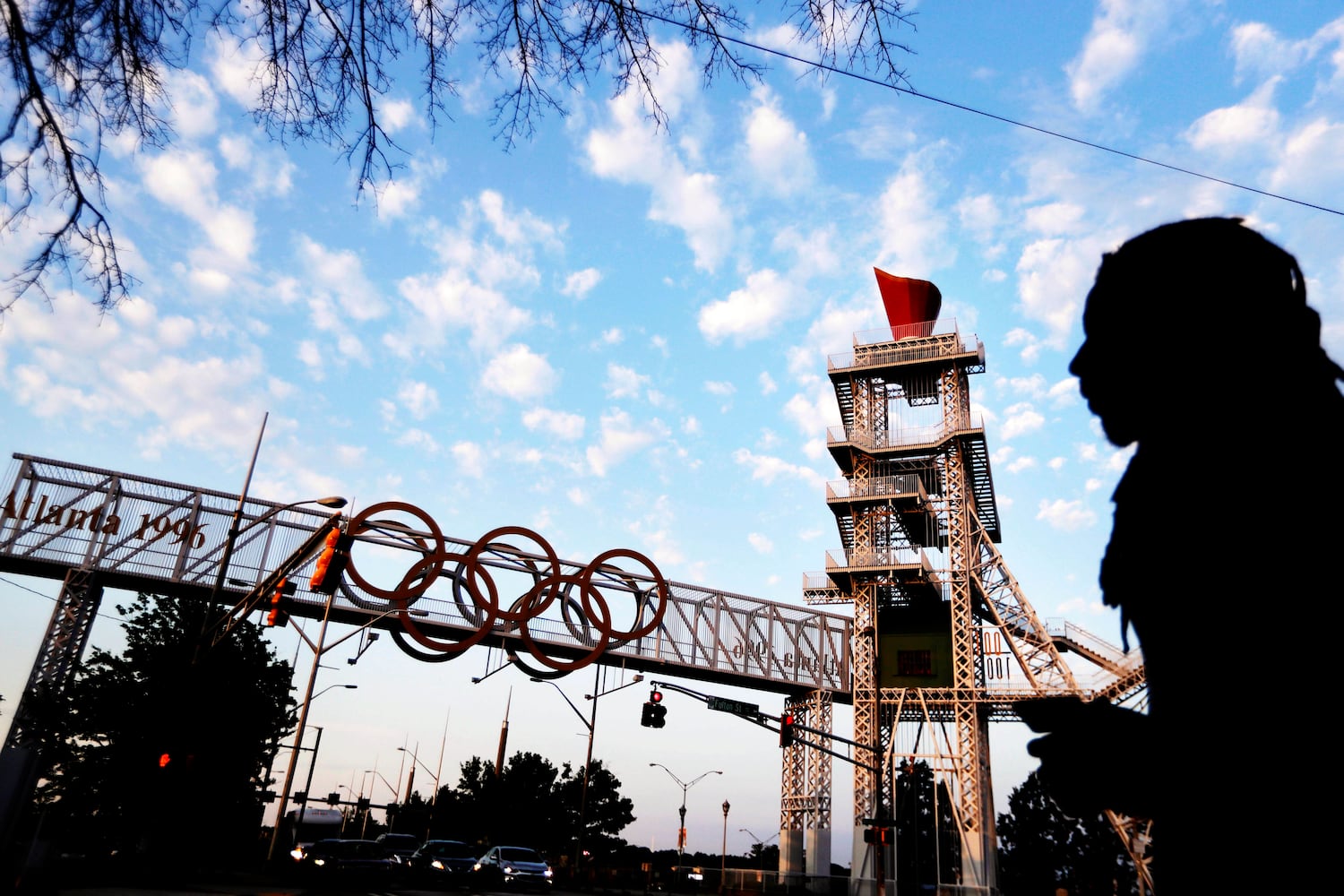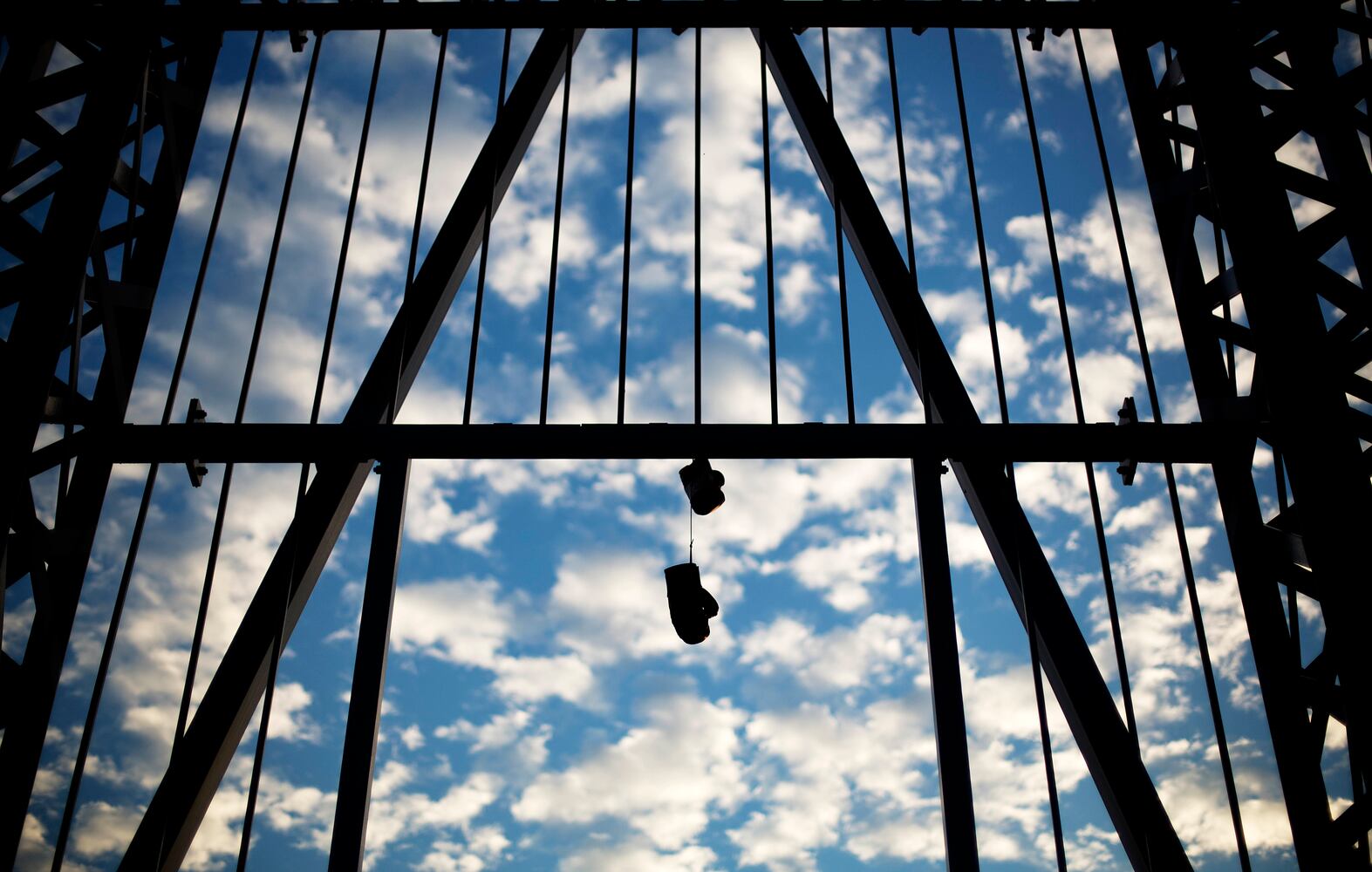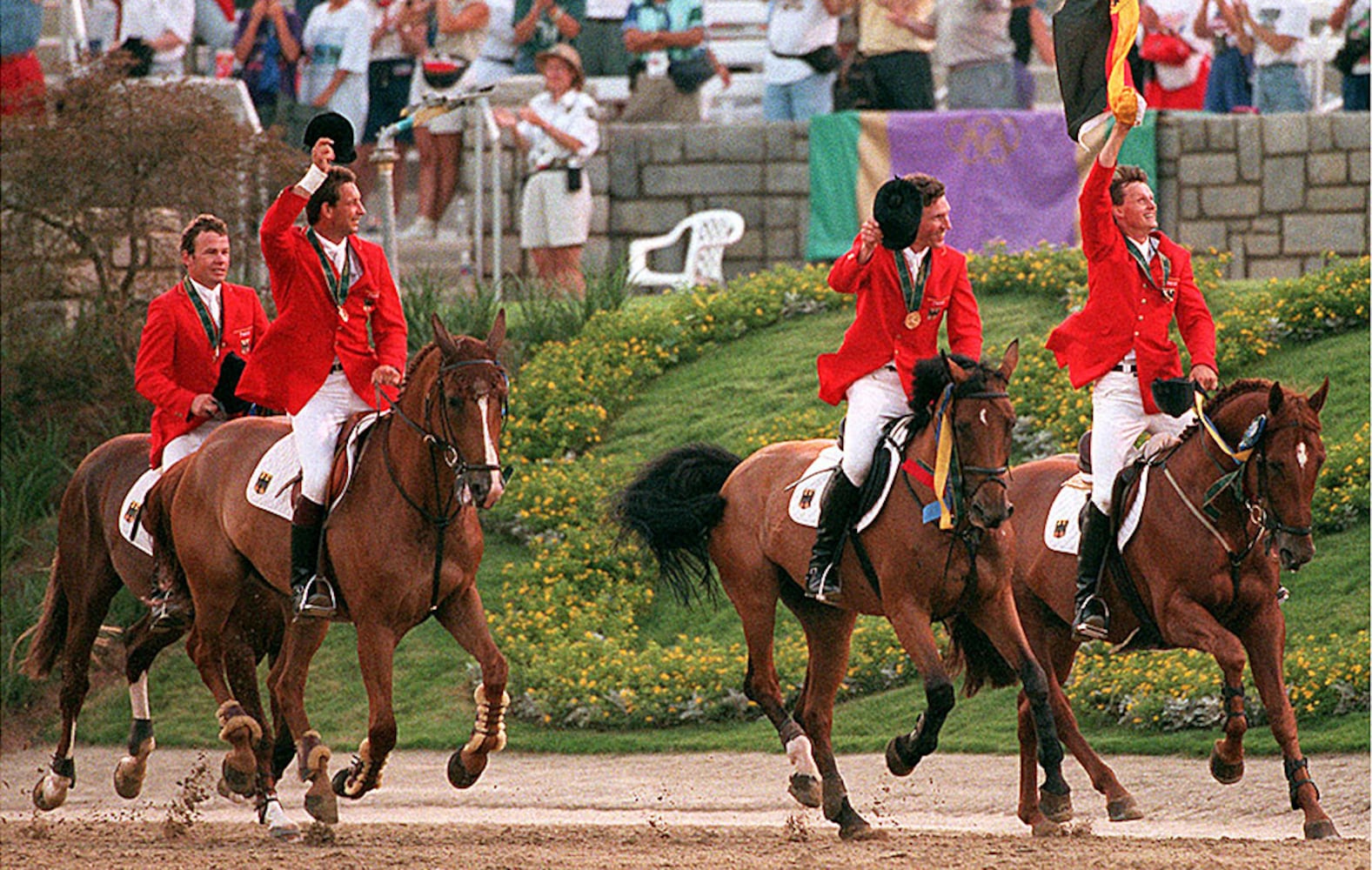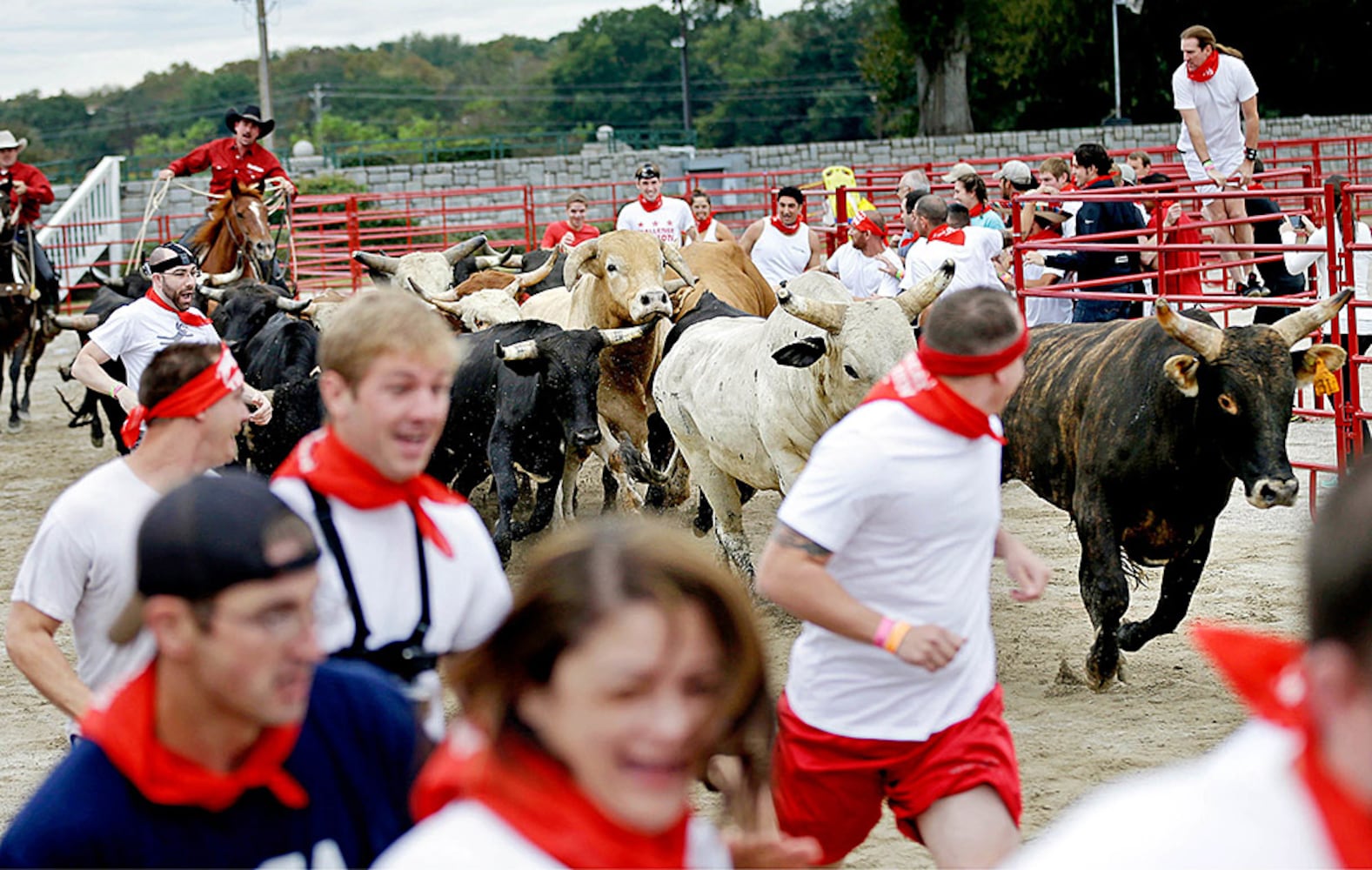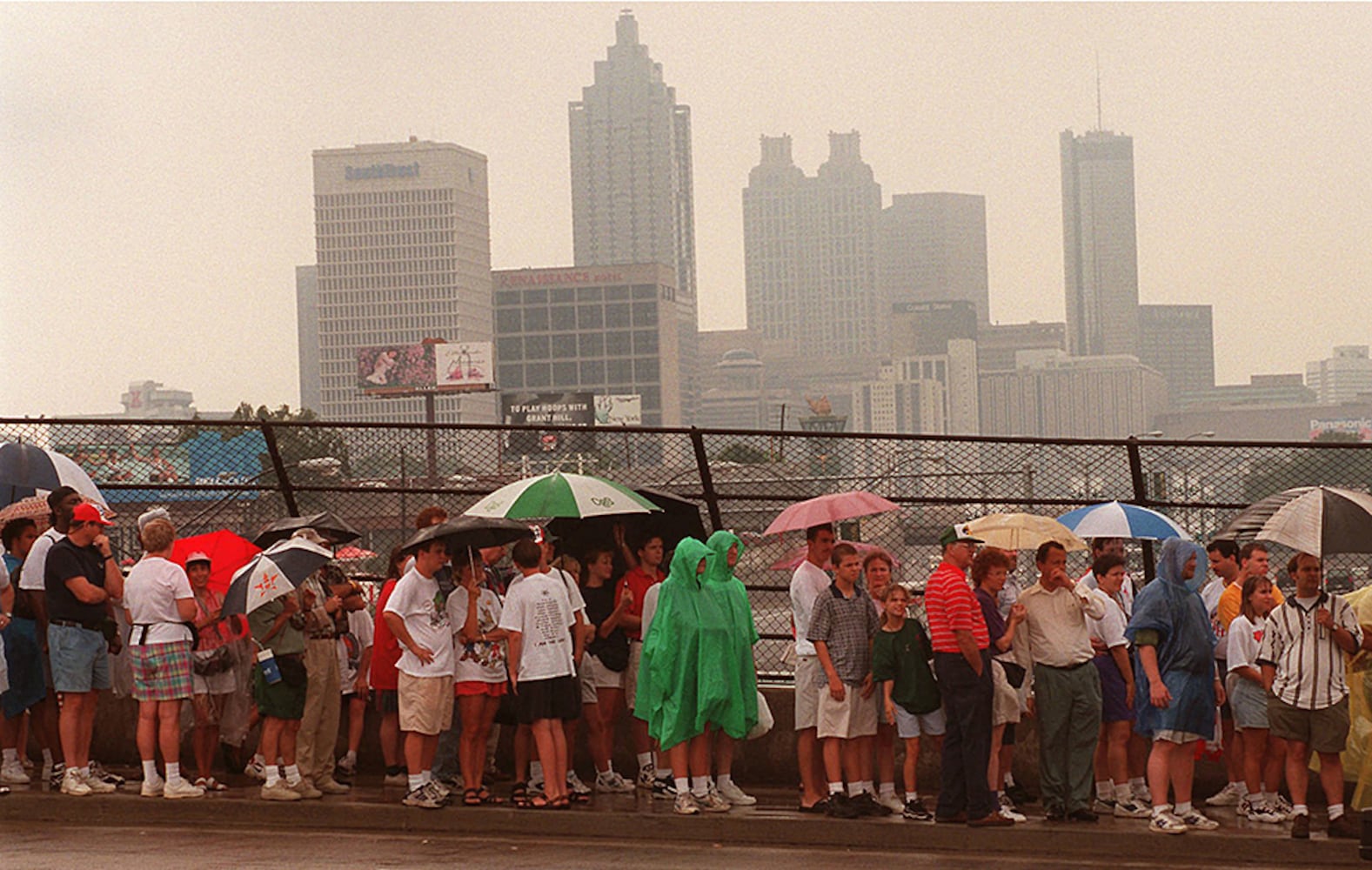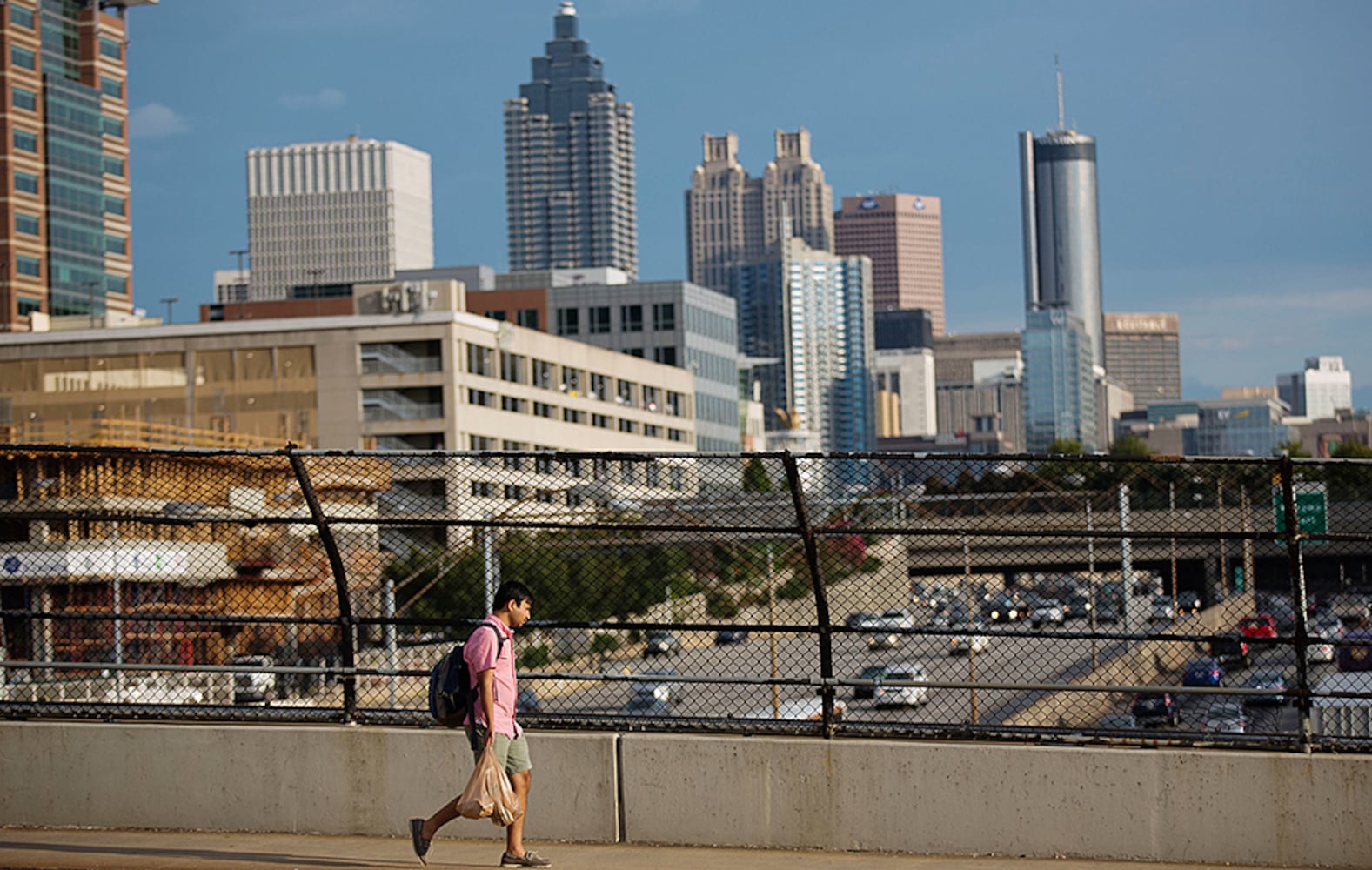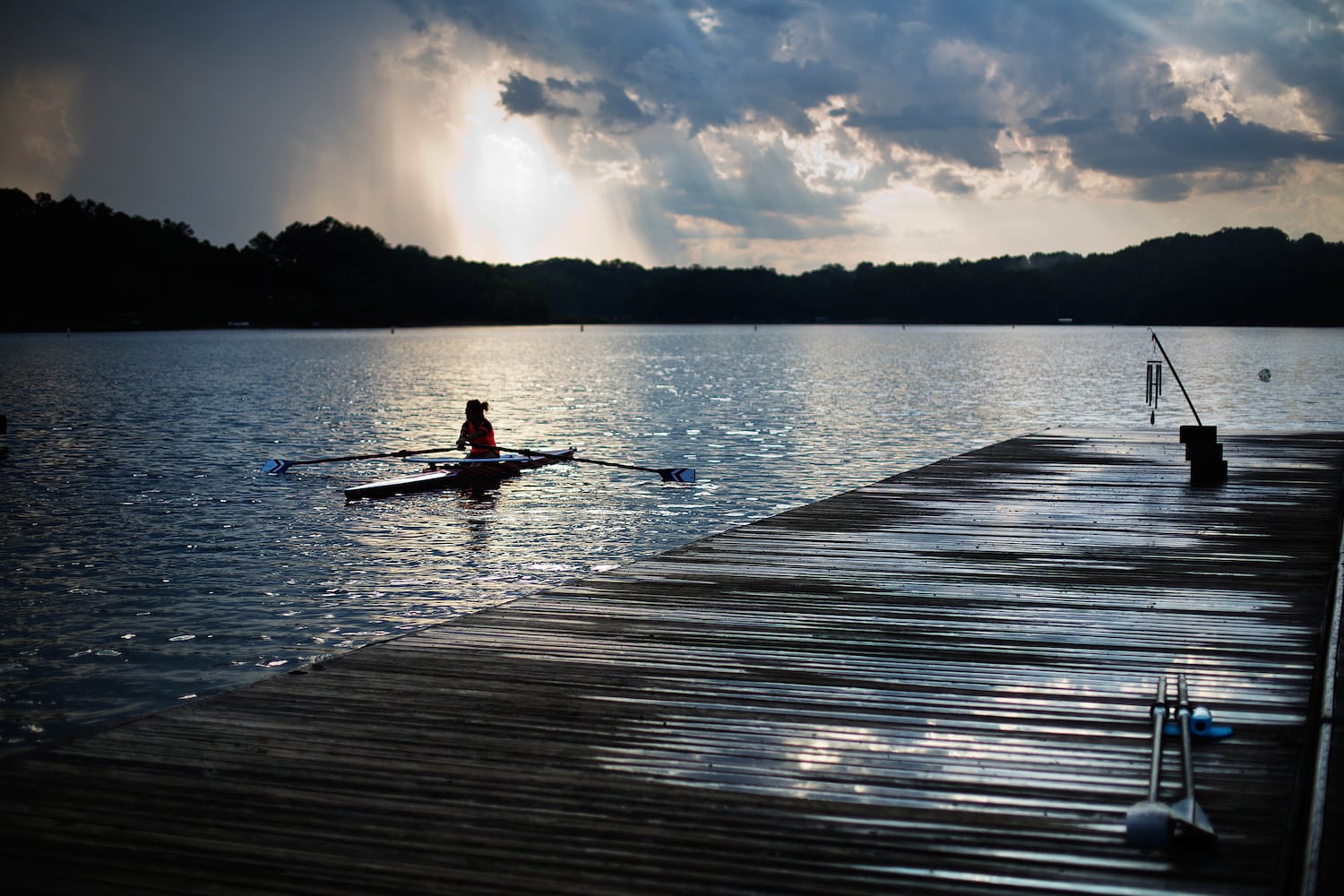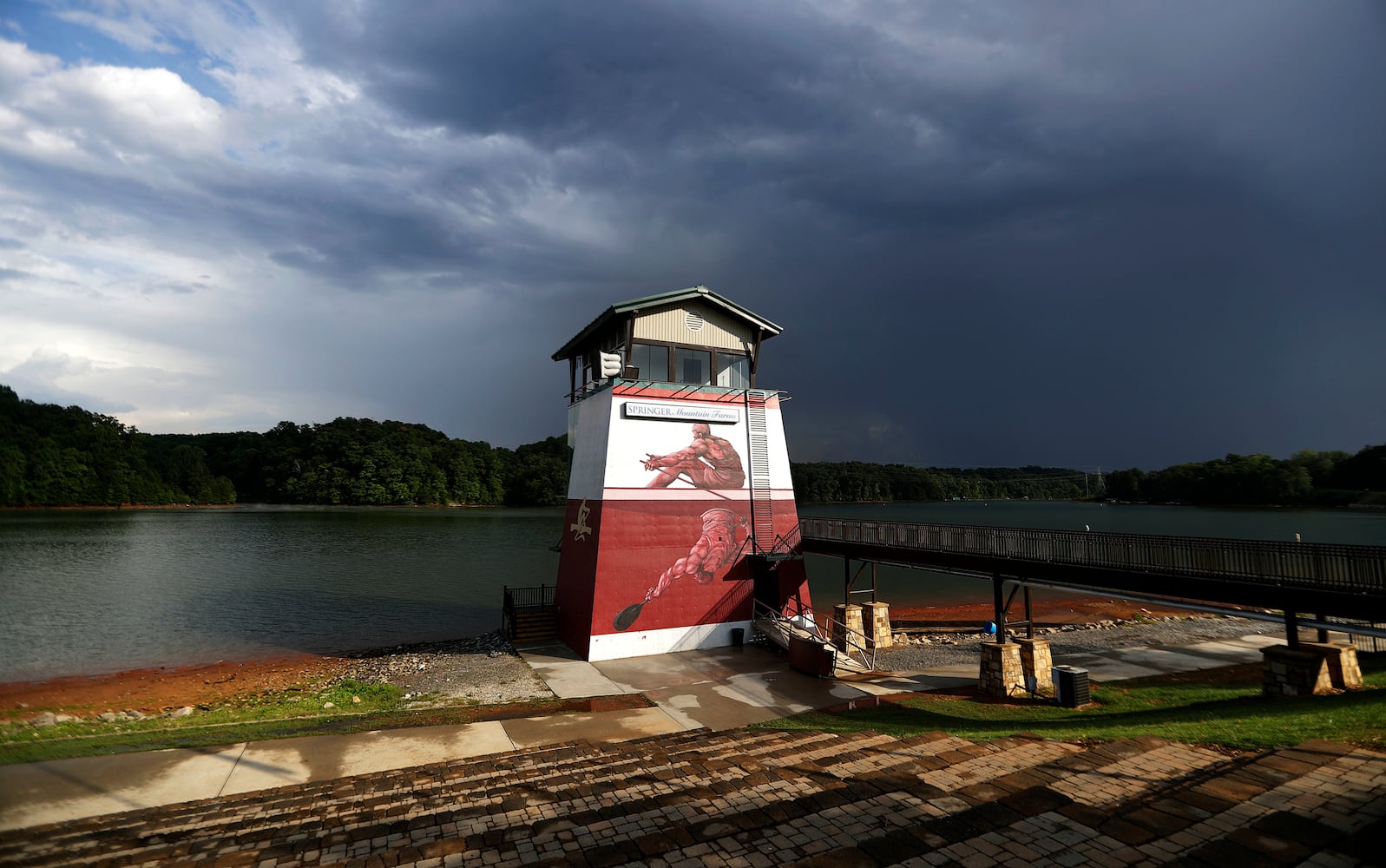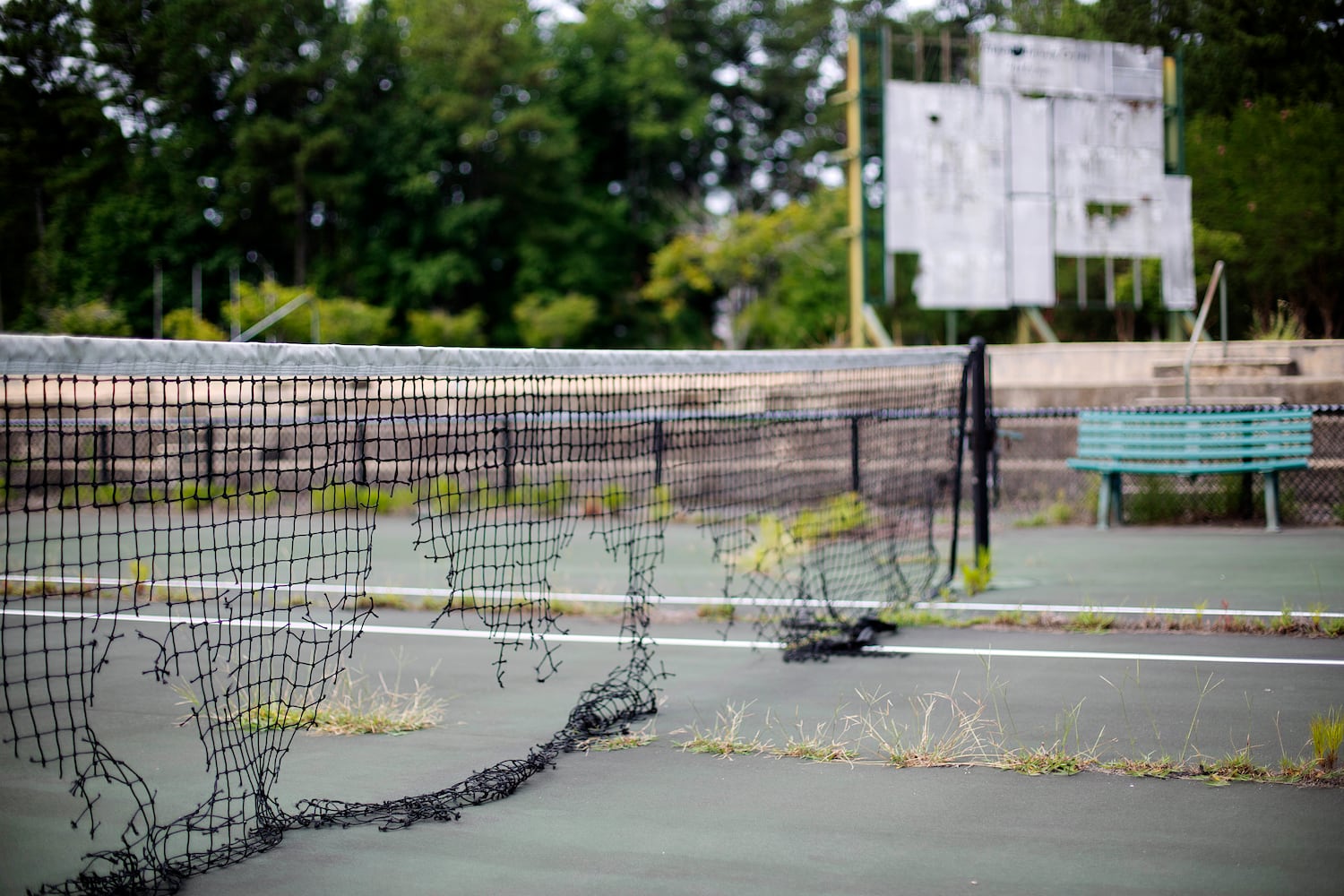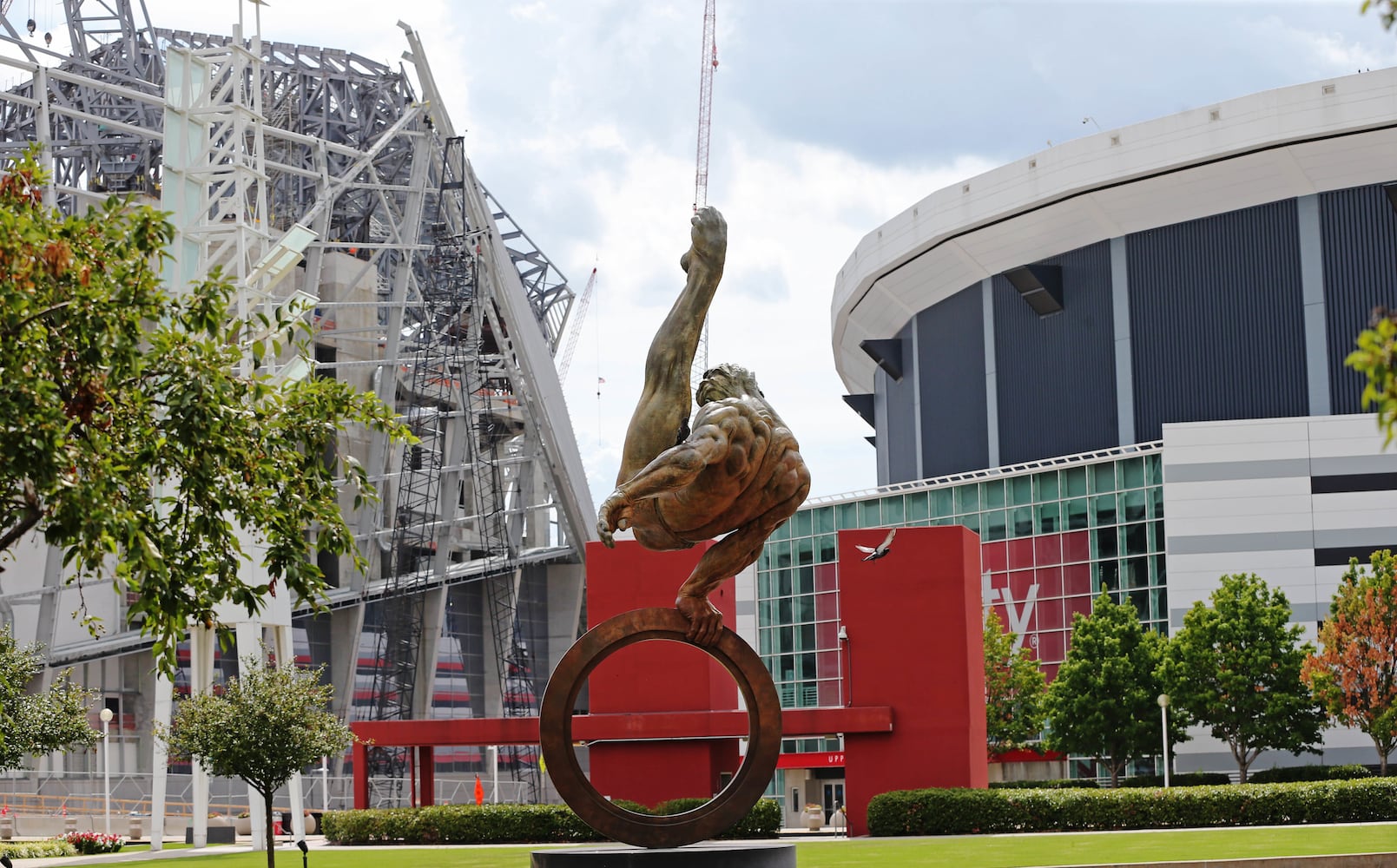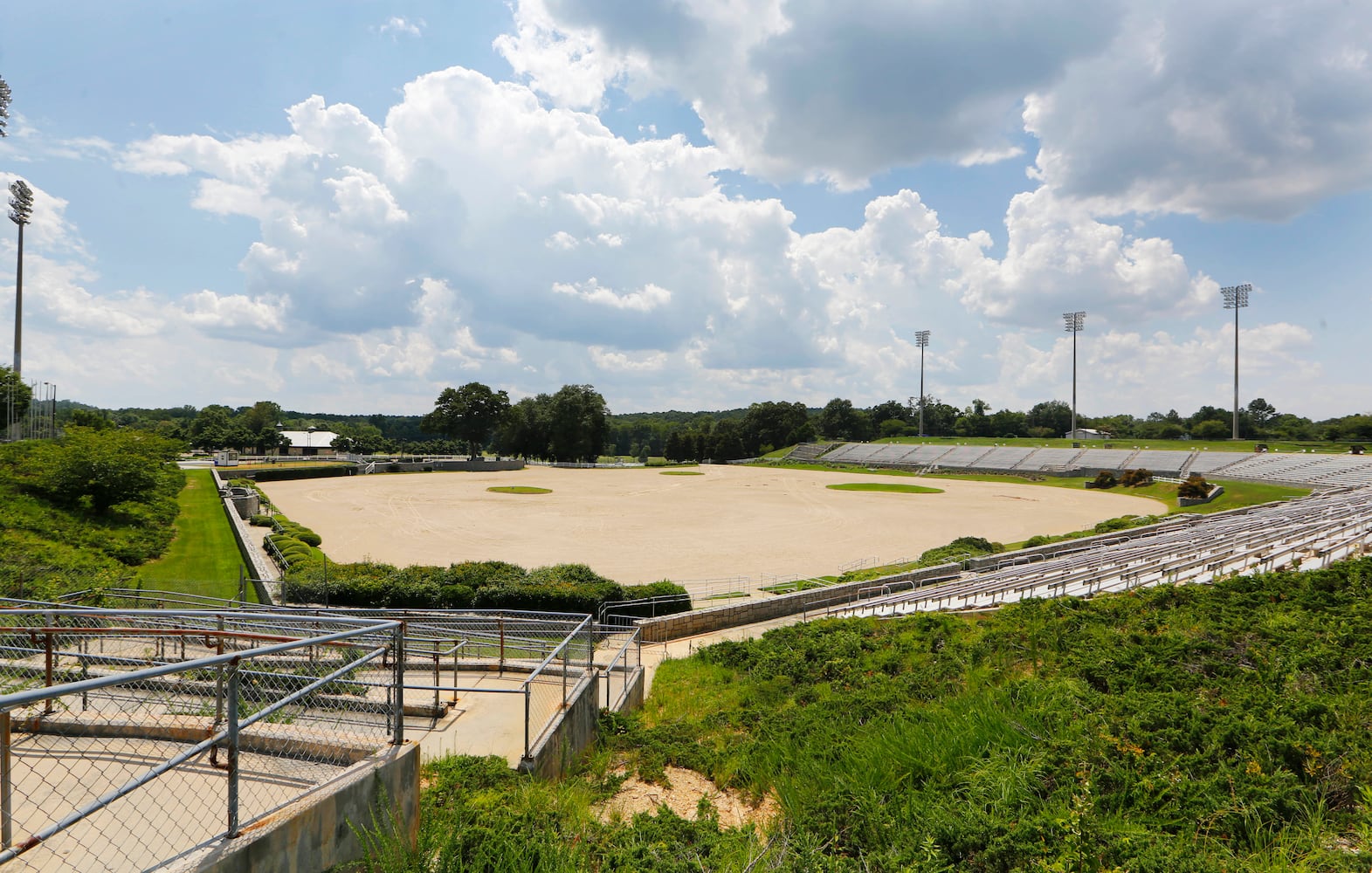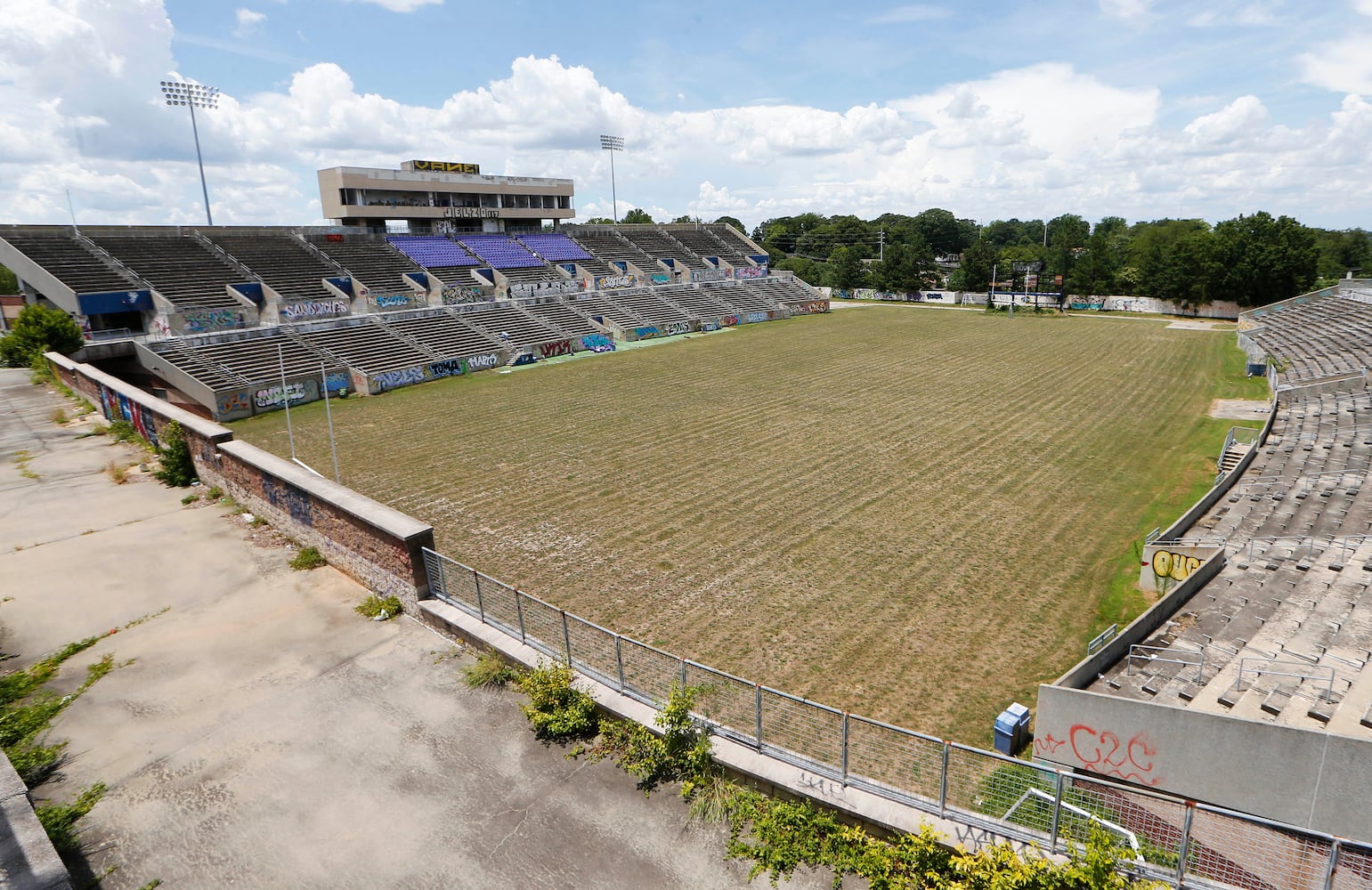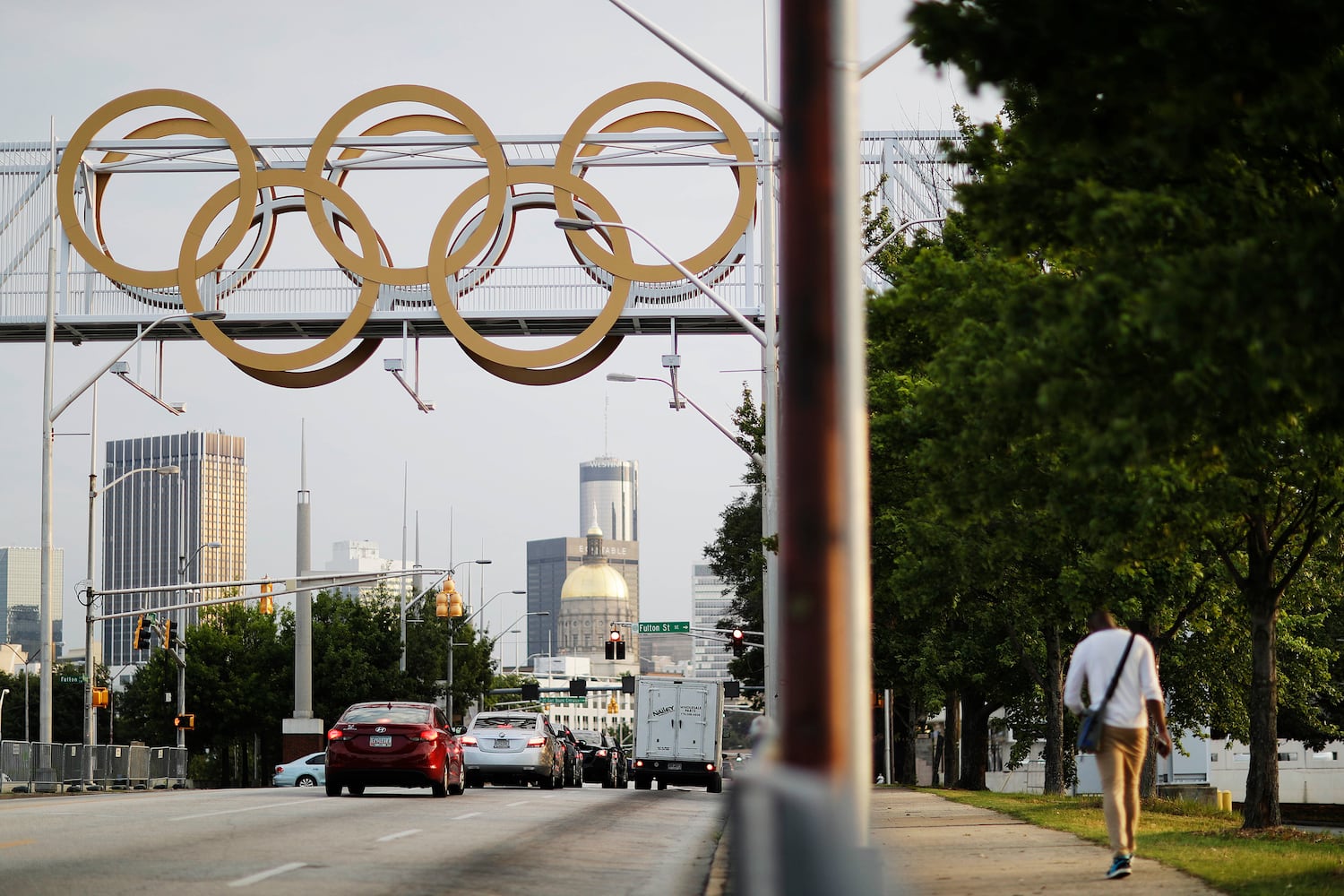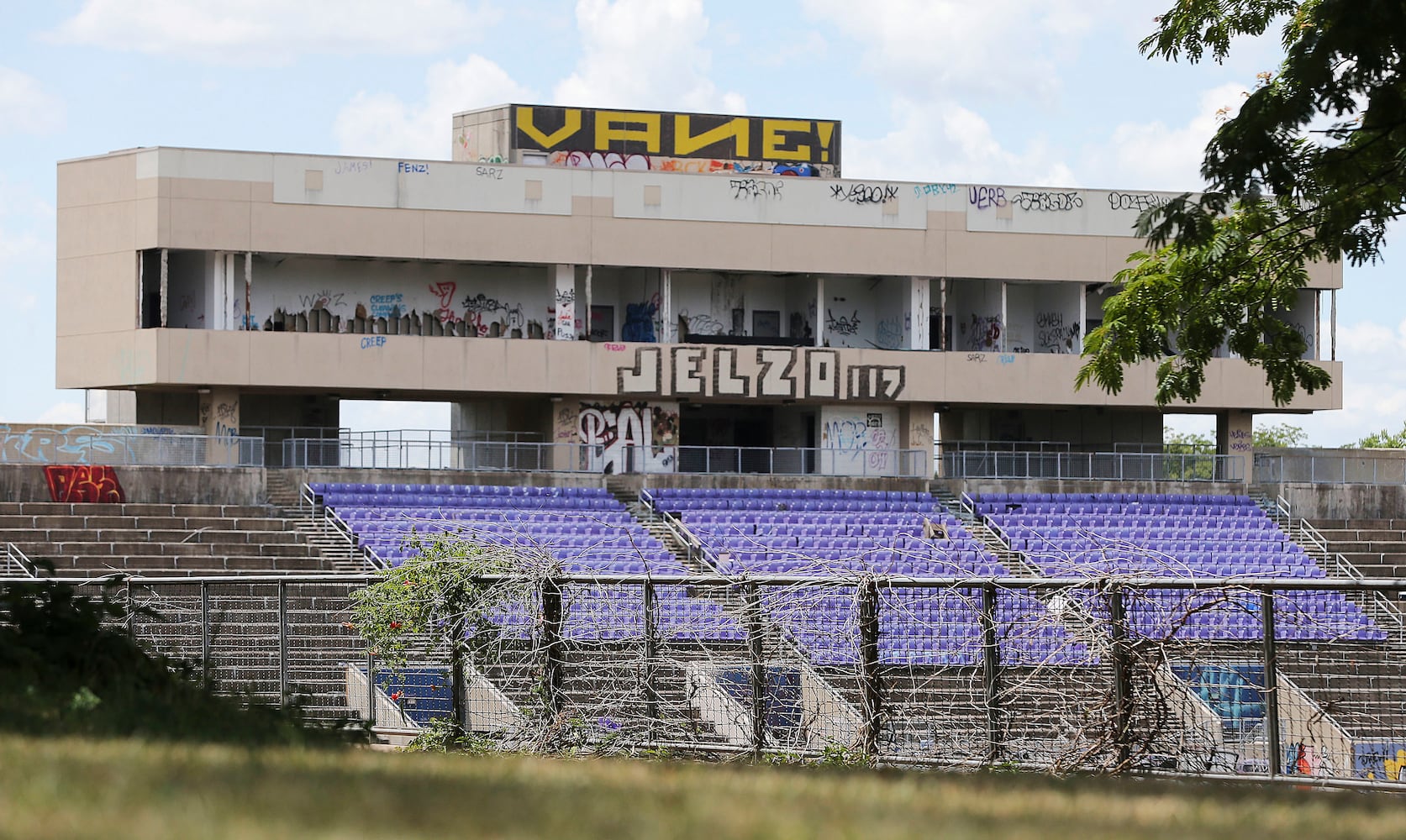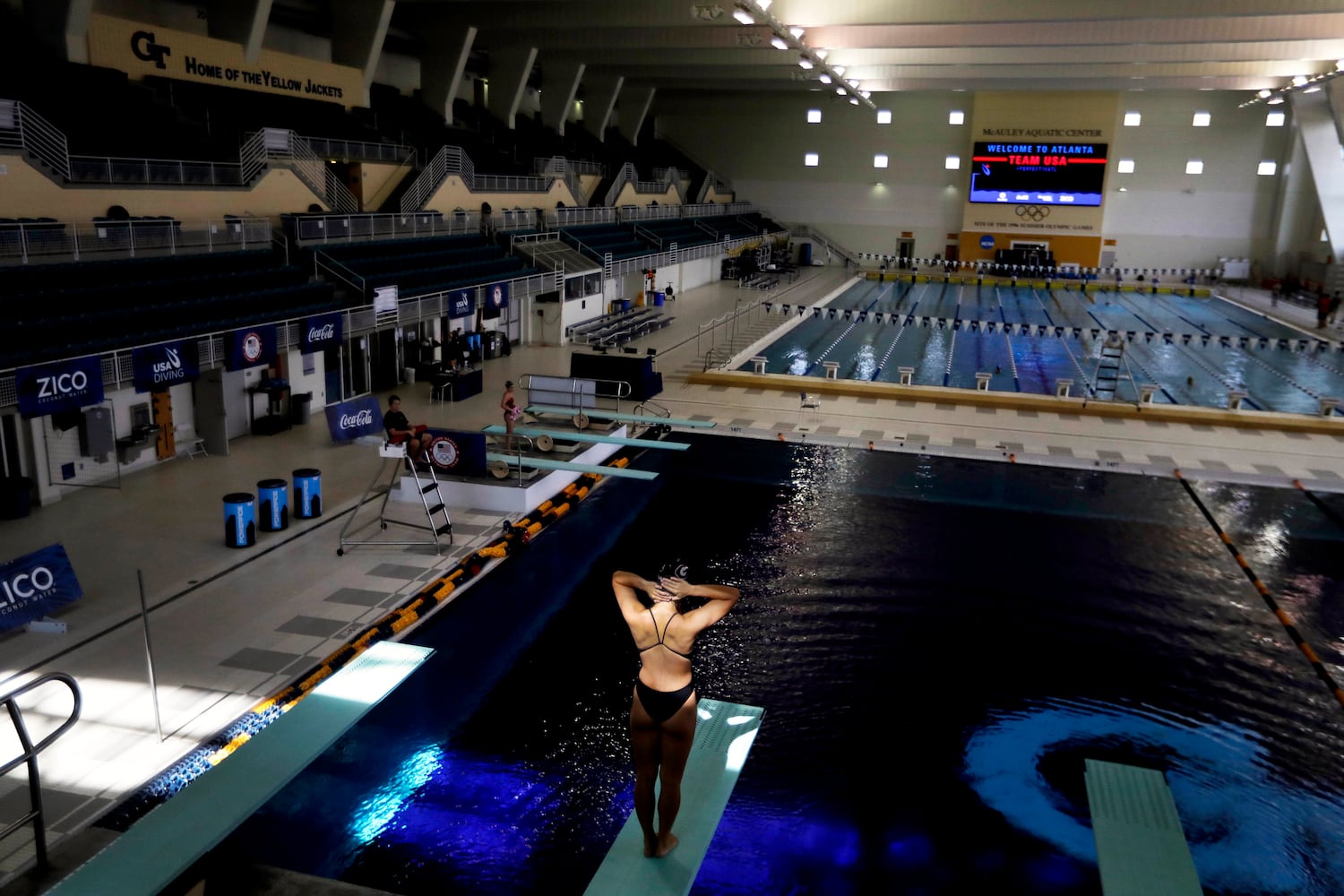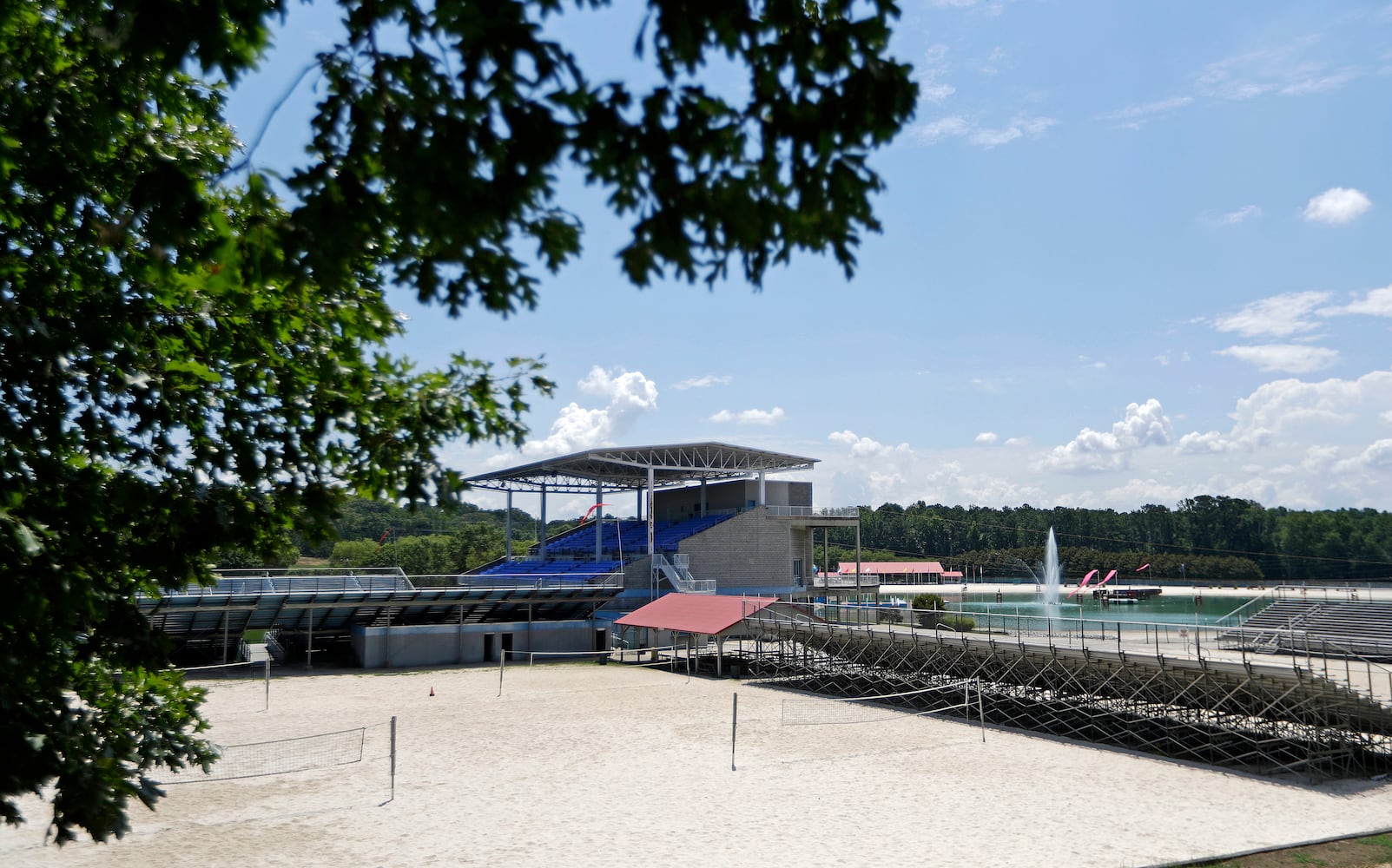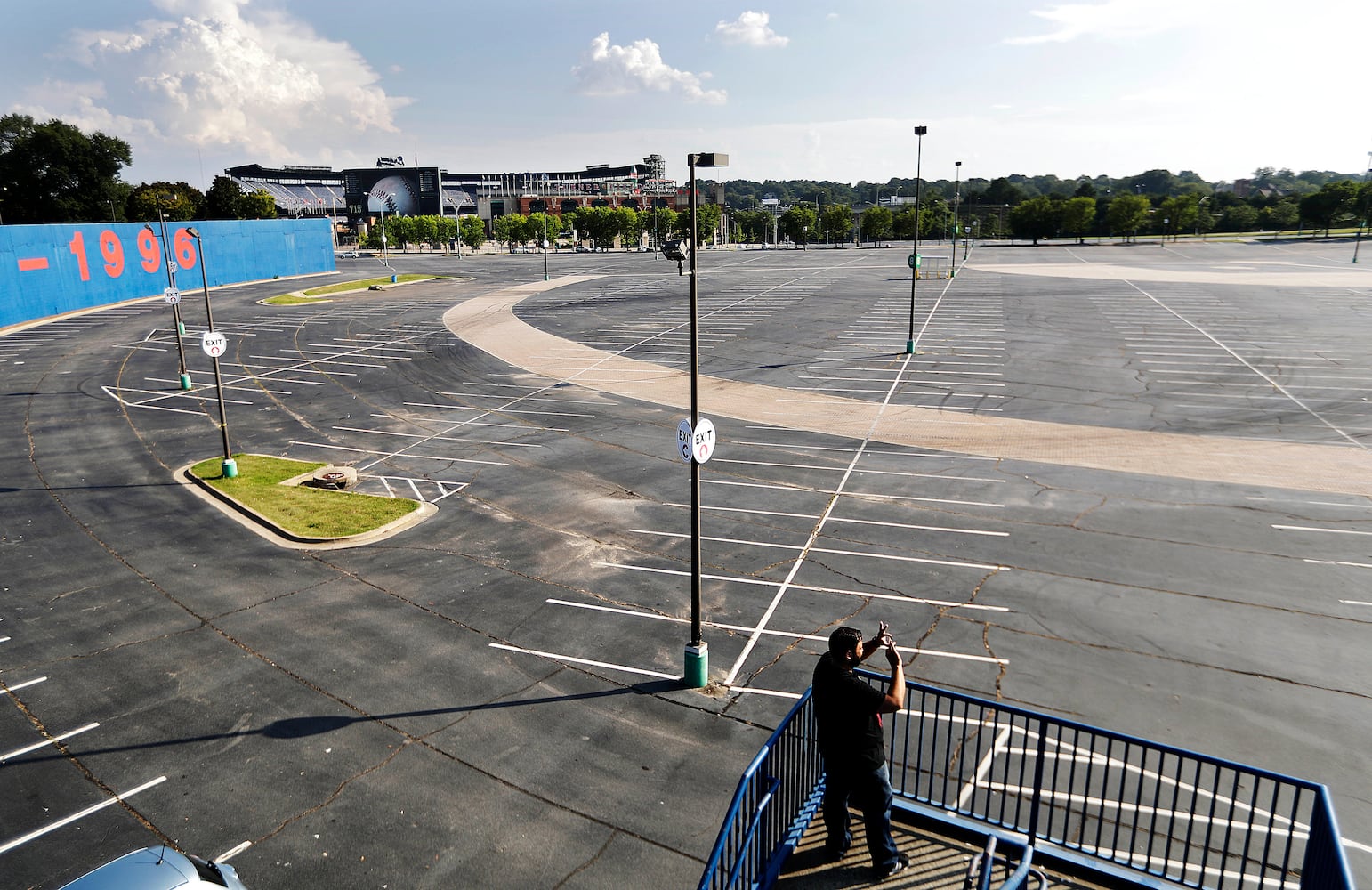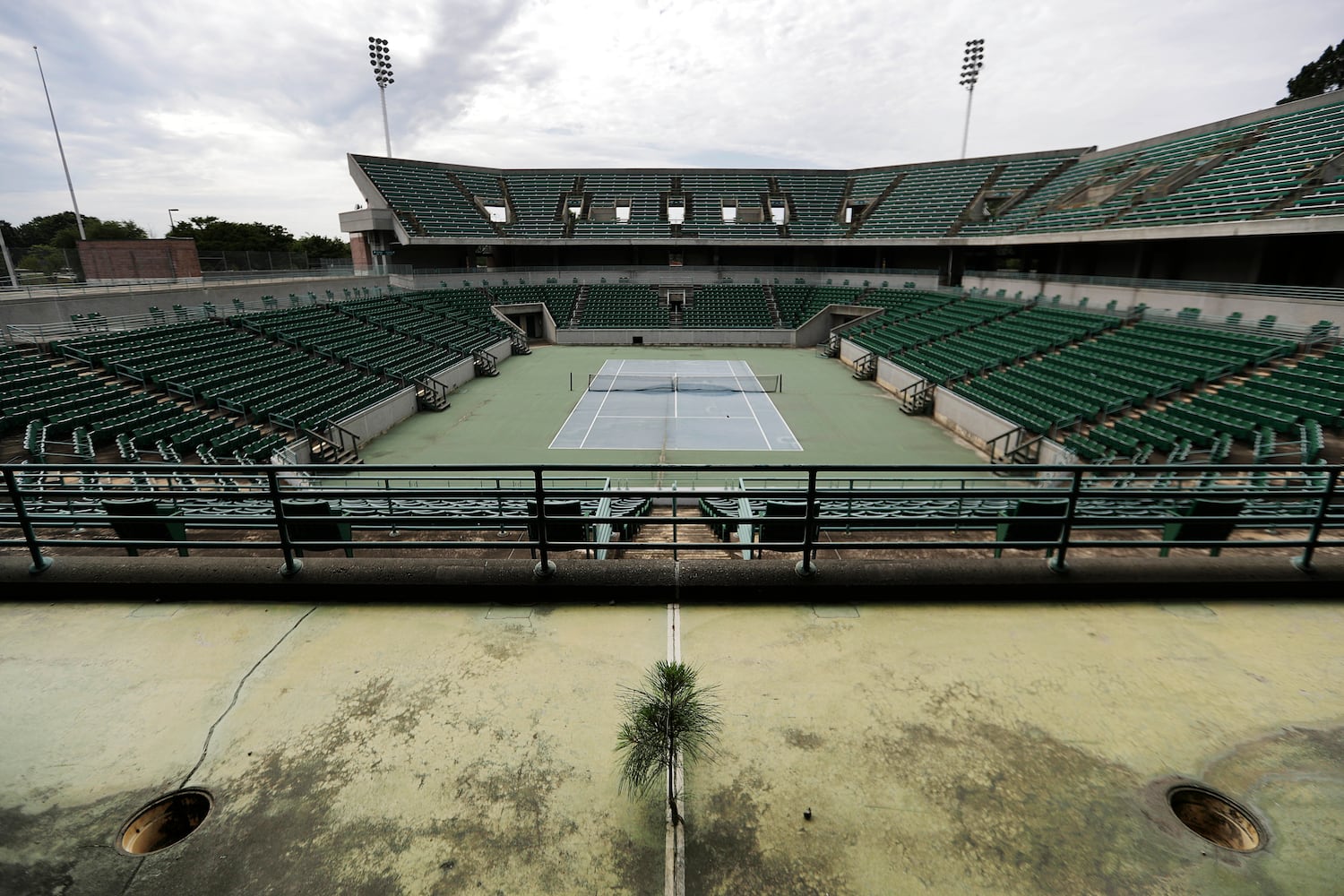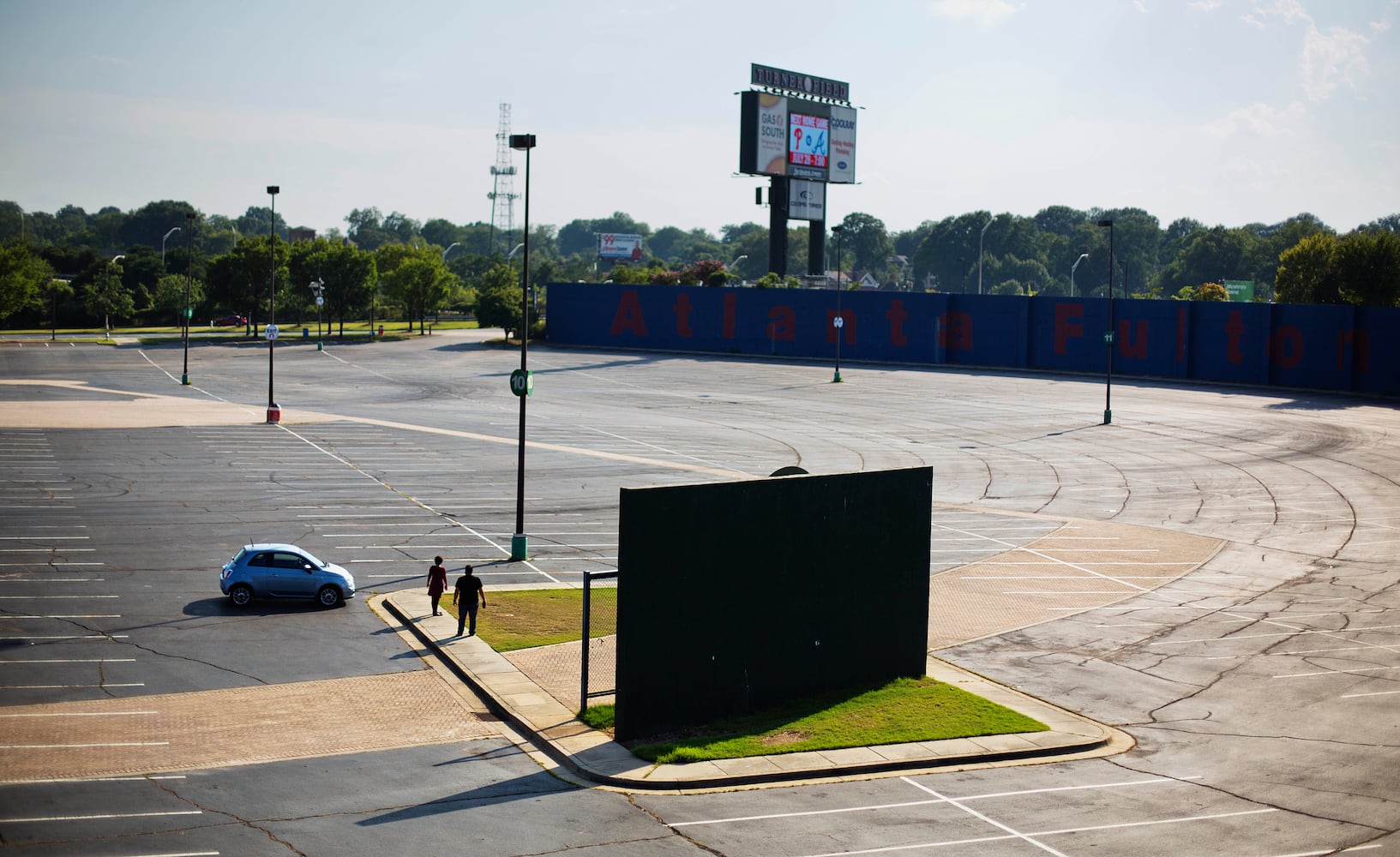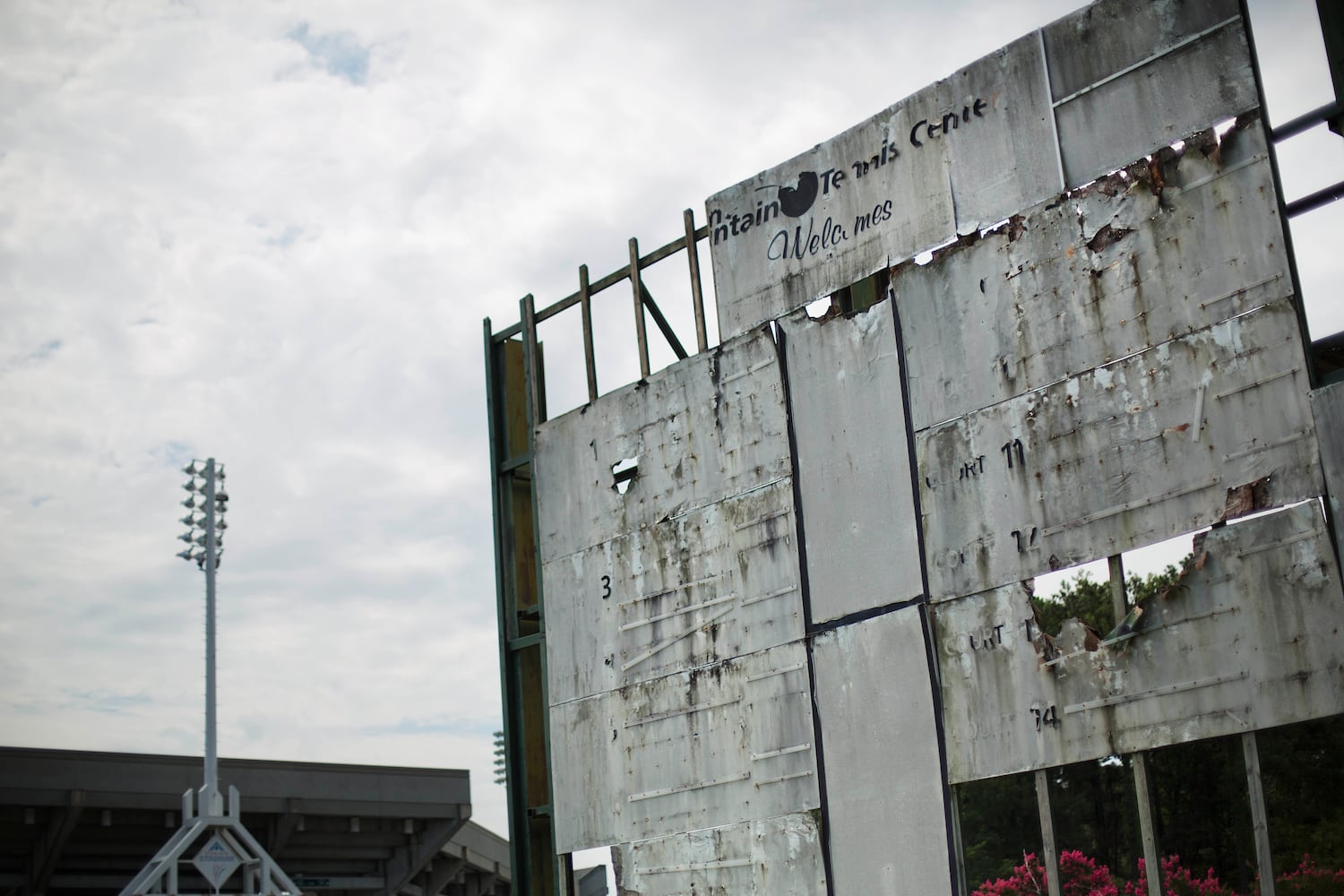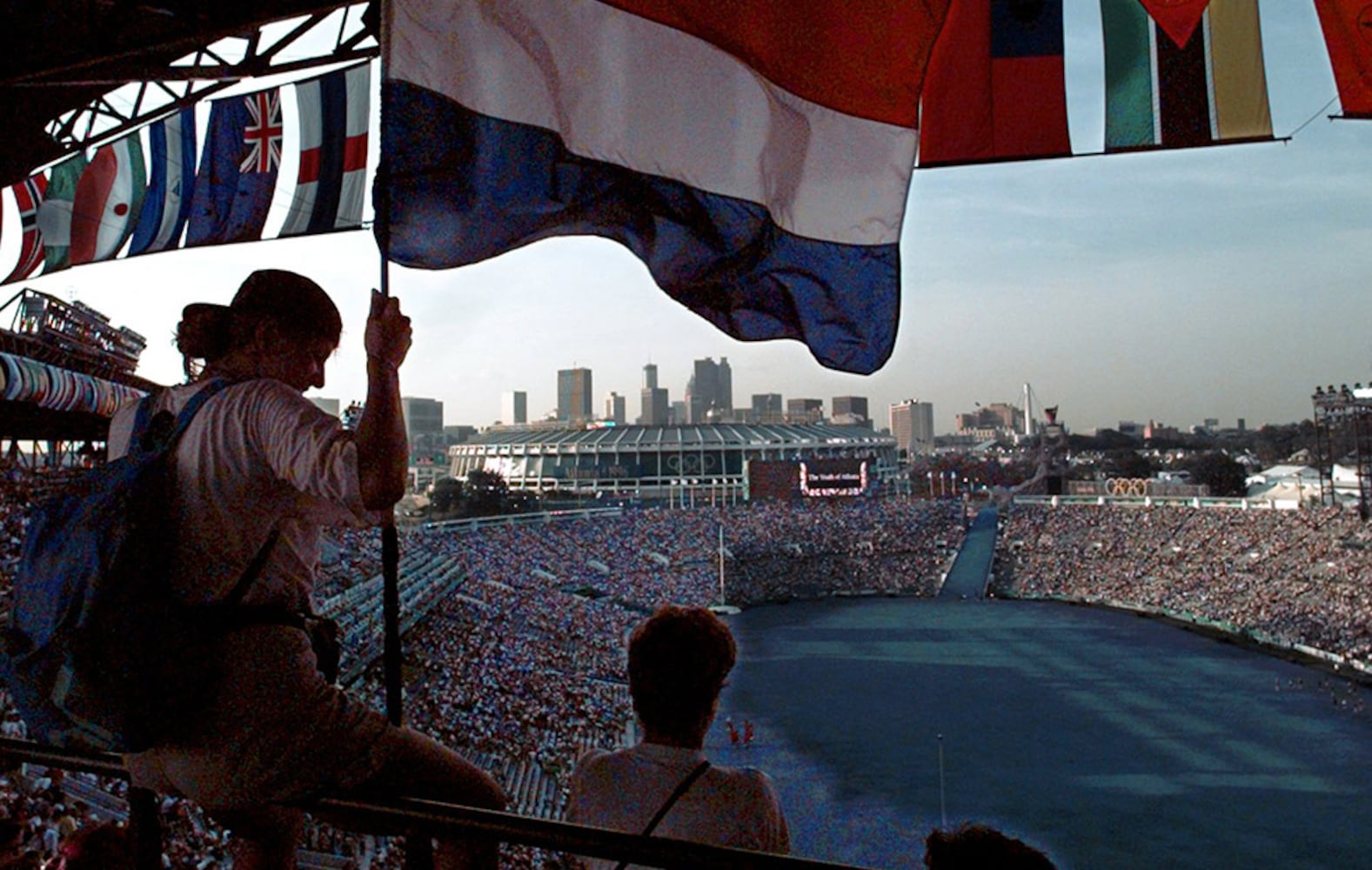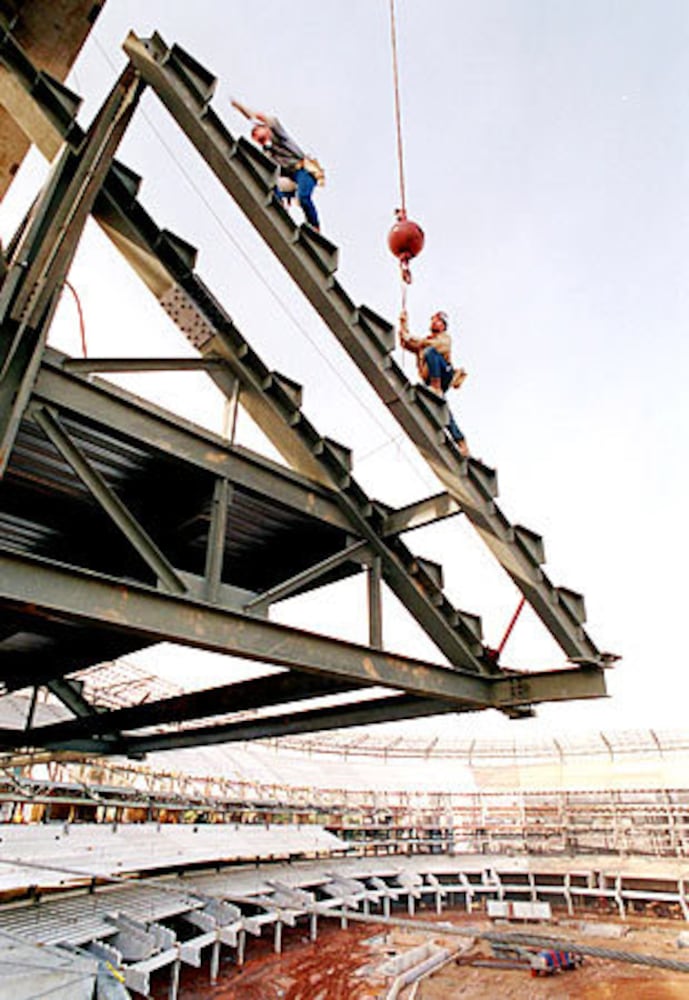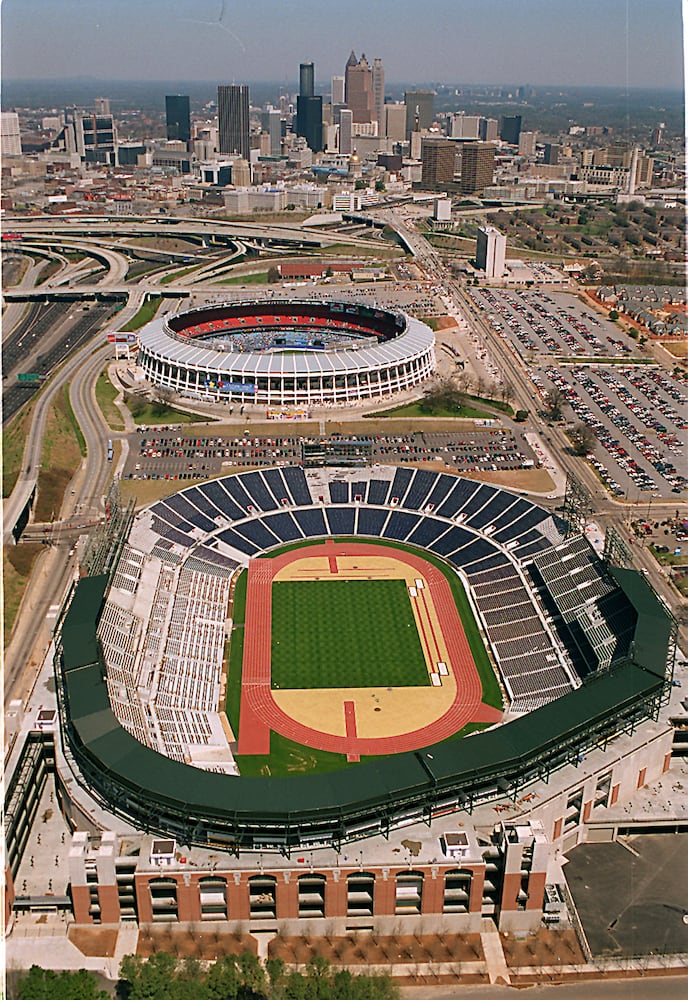Published July 26, 2016
Bit by bit, the daily reminders of the 1996 Summer Olympic Games in Atlanta disappear.
The airport mural of children at Centennial Olympic Park was taken down last month. Weeks earlier, the towering metal peach on the Downtown Connector met a similar fate. At Turner Field, once known as Olympic Stadium, the Braves are playing a last, desultory season before moving to Cobb County.
And, at the Atlanta History Center, workers are about to close the Olympics exhibit in preparation for an updated, albeit smaller, Olympic experience.
“We’re simply telling a different story,” says Don Rooney, the museum’s director of exhibitions. “Things that mattered to us in 1996, did they matter to us as much in 2006? Do they even matter in 2016? Isn’t that true in life too?”
The physical reminders of the Olympics may slide into oblivion, but the games’ legacy — legacies, rather — lives on. It was 20 years ago this week that the world’s sporting attention turned to Atlanta. The Olympics were our time to shine, a once-in-a-lifetime opportunity to show the world that a striving Southern burg could punch above its adolescent weight.
“The people who attended the games had the best experience. It was electric if you were there,” says Randy Parsons, 61, who volunteered as an airport greeter for 30 straight nights in the run-up to the games. “It definitely put us on the map and made it a better city.”
Never before had so many spectators crowded the arenas and ballparks to witness the scintillating Olympic games. Never before had so many athletes participated in the quadrennial games. Never before had so many people — 50,000 — signed up as Olympics volunteers.
And, never before had the criticism of a host city reached such Olympian heights. During the closing ceremony, the Olympic committee president pointedly declined to call the games “the greatest ever,” as per custom. Atlantans bristled at the Southern bumpkin caricatures penned by the European press.
The Centennial Olympic Park bombing horrified the world, but for the people of Georgia, pride of place kept mad bomber Eric Rudolph from ruining the games.
As the games recede in memory, they’re placed in a different, more historical context. They’ve entered the pantheon of storied Atlanta events alongside the Cotton States Exposition of 1895 or the beginning of Hartsfield-Jackson airport thirty years later.
“This was an impossible dream in so many ways,” says Charlie Battle, one of a handful of key figures in bringing the games to Atlanta. “But we really brought the community together for something bigger than us all. It certainly was a great moment in the history of the city.
“We won’t ever forget the games”
Parsons and his fellow pinologists gather the third Wednesday of every month at The Varsity in downtown Atlanta in a back room overlooking the connector to buy, sell and trade commemorative Olympic (and other) pins. A passionate and fun bunch, they lay their tiny metal wares across Formica-topped tables: Coca-Cola pins; gold Izzy pins; silver horseshoe pins; torch pins; gymnastic pins; lipstick pins; even the Varsity’s “What’ll Ya Have” pins that once sold for $1,500.
An estimated 100 million pins were fabricated for the Olympics, ensuring that for pinheads, at least, the games will never die.
Frances Carey once tallied 3,000 pins displayed in 15 hand-hewn window boxes in her Conyers home. She caught the pin bug as the games began, buying 20 each day. She also caught Olympic fever and voluntarily directed traffic outside the Olympic horse park in her Rockdale County town.
“It was unbelievable to host. We won’t ever forget the games,” said Carey, 66. “You see that cauldron over there? It’s still standing.”
Carey motioned beyond the Varsity’s glass-walled dining room to the Olympic Torch Tower a few blocks northward where tourists once ascended to the 120-foot high observation deck. Another tangible reminder of the Olympics sits just across the highway: the 2,000-bed dormitory that was once a part of the Olympic Village.
Each has seen better days. A travel website says the “torch is currently closed and mostly ignored.” The dorms were transferred to Georgia State after the games and later to Georgia Tech, which spent millions of dollars keeping the red brick facade from falling onto the connector.
“Australia built the Olympic Village, and it’s going to seed. The Bird’s Nest is rusting away in Beijing. In many places, the venues have become eyesores and worthless relics,” says A.D. Frazier, the chief operating officer for Atlanta’s Olympics. “Montreal has a hangover of public debt. We didn’t have a penny of debt. It was all private money.”
There you have it, Atlanta’s immortal Olympic legacy: The Debt-Free Games!
It’s not very catchy. But it remains a significant outcome for any games, especially in this era of tight-fisted, recession-wary governments. The Russians, after all, spent $50 billion readying Sochi for the 2014 Winter Olympics, a vanity project that will never return a smidgen of the investment. The Atlanta Committee for the Olympic Games, in contrast, raised $1.7 billion privately to build the venues and run the show.
“If you look now at the challenges facing the Olympics, it becomes even more remarkable that we were able to put on this huge event without having to rely on extensive government financing or going way over budget,” said Battle, the committee’s director of international relations. “We built some facilities that were really helpful, and we enhanced the quality of life in so many other ways.”
None more so than Centennial Olympic Park. Games chairman Billy Payne insisted that 21 acres of blighted downtown property between CNN and Georgia Tech — old industrial buildings and a housing project — be transformed into a rolling and rollicking greensward. The park later helped catalyze downtown Atlanta’s development. The Georgia Aquarium, the World of Coca-Cola, the Center for Civil and Human Rights, the College Football Hall of Fame and Ivan Allen Plaza have all cropped up over the past 20 years.
“No doubt,” said Battle, “the most important physical legacy is Centennial Olympic Park.”
From snafu to posterity
In the early 1990s, Frazier traveled the world on Delta ginning up interest in the Atlanta games by handing out Olympic pins. Invariably, he was met by puzzled looks by those unfamiliar with the city. He was asked about gambling (Atlantic City) and Gone With The Wind.
When July 19, 1996 finally arrived, the world’s eyes were on the capital of the New South. Many didn’t like what they saw. Or read.
Buses broke down or went to the wrong venues. With hotel rooms at a premium, some journalists were put up at a homeless shelter. IBM’s supposedly state-of-the-art computers failed repeatedly to provide scores quickly and accurately. Hordes of street vendors selling Olympic T-shirts, hats and trinkets affixed with “USA” clogged sidewalks and reinforced impressions of Southern tawdriness.
“For people who read Le Monde or Die Zeit or The Times of London, they got a little different picture than what we experienced,” Frazier said. “The print press pilloried us. …They came to the Olympics and expected to be treated like royalty.”
There was more. Izzy, the games’ mascot, was maligned by Matt Groening, creator of The Simpsons, as “a bad marriage of the Pillsbury Doughboy and the ugliest California Raisin.” The real villain, though, was Eric Rudolph who left a shrapnel-filled pipe bomb in Centennial Olympic Park that killed a South Georgia woman on the games’ eighth day.
“It was hard for Samaranch to say we had the greatest games ever when we had the bombing,” said Battle, an attorney and consultant to Olympic bid cities around the world. “But they were great games. They were great moments in Olympic history. And they were certainly great moments in the history of our city.”
And that, 20 years hence, is perhaps the real legacy of the Olympics: another seminal event in Atlanta’s 180-year life. Right up there alongside Sherman burning the city during the Civil War. Or the Cotton States Expo that put Atlanta on the map as a New South city of commerce. Or the purchase of a dirt race car track in 1925 that turned into Hartsfield-Jackson International Airport.
The memories fade as time passes all by. New memories replace old ones, including the once-indelible image of a hobbled Kerri Strug nailing the vault. But history was made.
“The Olympic Games were a milestone, among others, in Atlanta’s history,” said the history center’s Rooney. “It’s on the list of remarkable events in which Atlanta reaches beyond perceived boundaries, overcomes challenges, invites participation and wins the attention of the world.”
Legacies, of course, mean different things to different people. Payne, the architect of Atlanta’s Olympics, said the games “really stood for only one thing: When this community comes together, we can do anything we want to do.”
And it did.
“Those of us from Atlanta will always be proud of the Olympics,” said Carey, the pin collector from Conyers. “I’m sure they’ll come back here some day.”
RELATED: Remembering the 20th anniversary of Atlanta’s Olympic moment
About the Author
Keep Reading
The Latest
Featured
